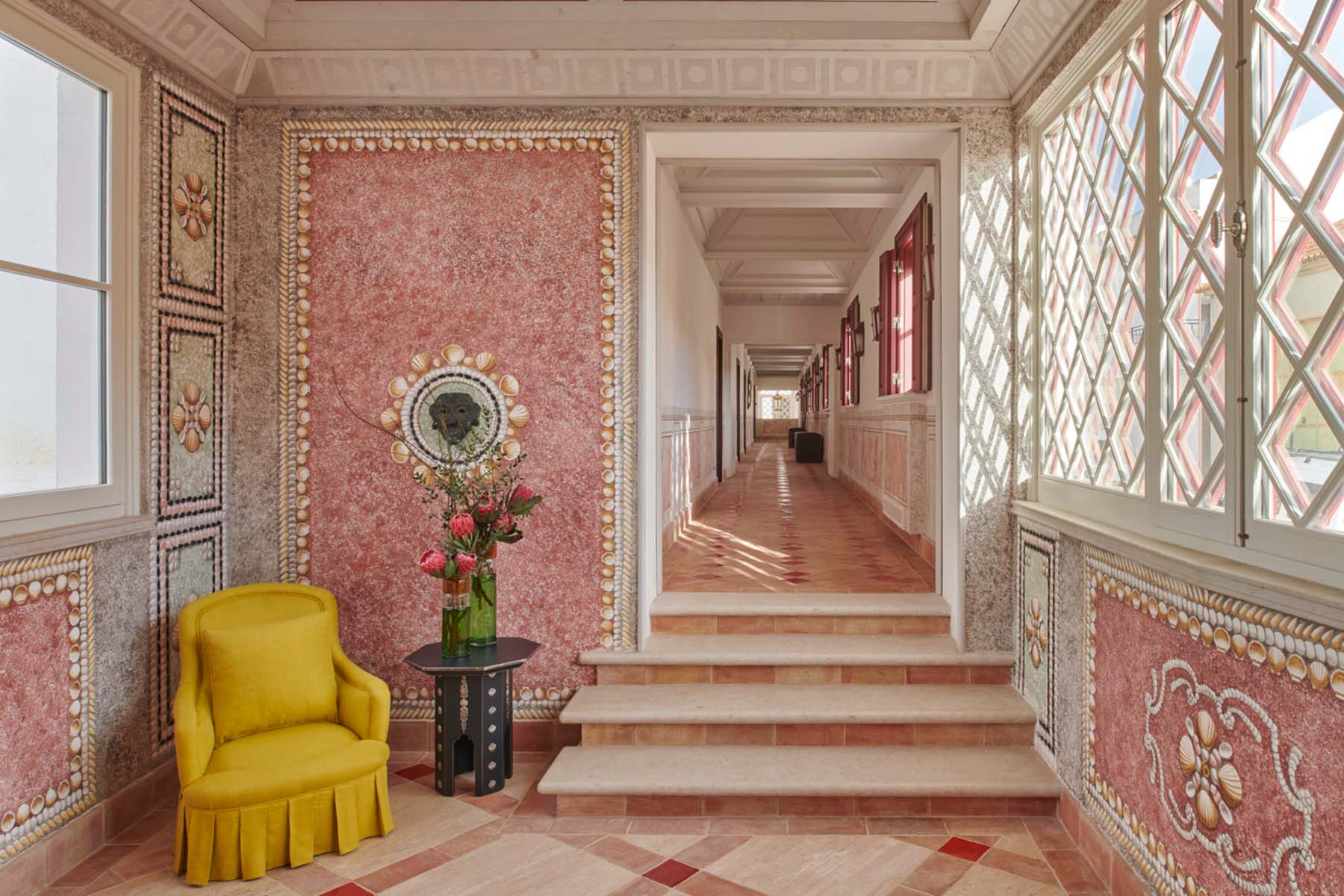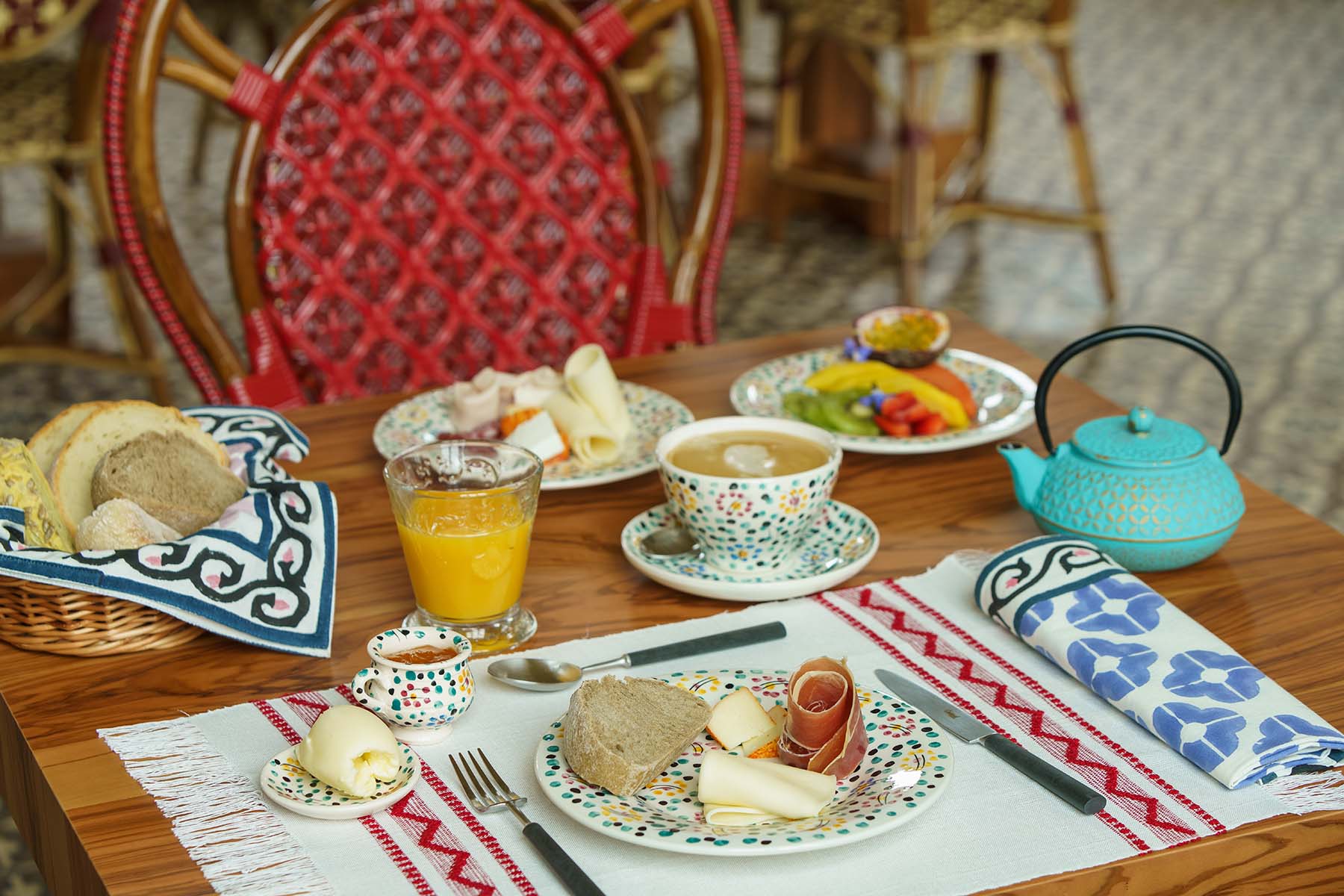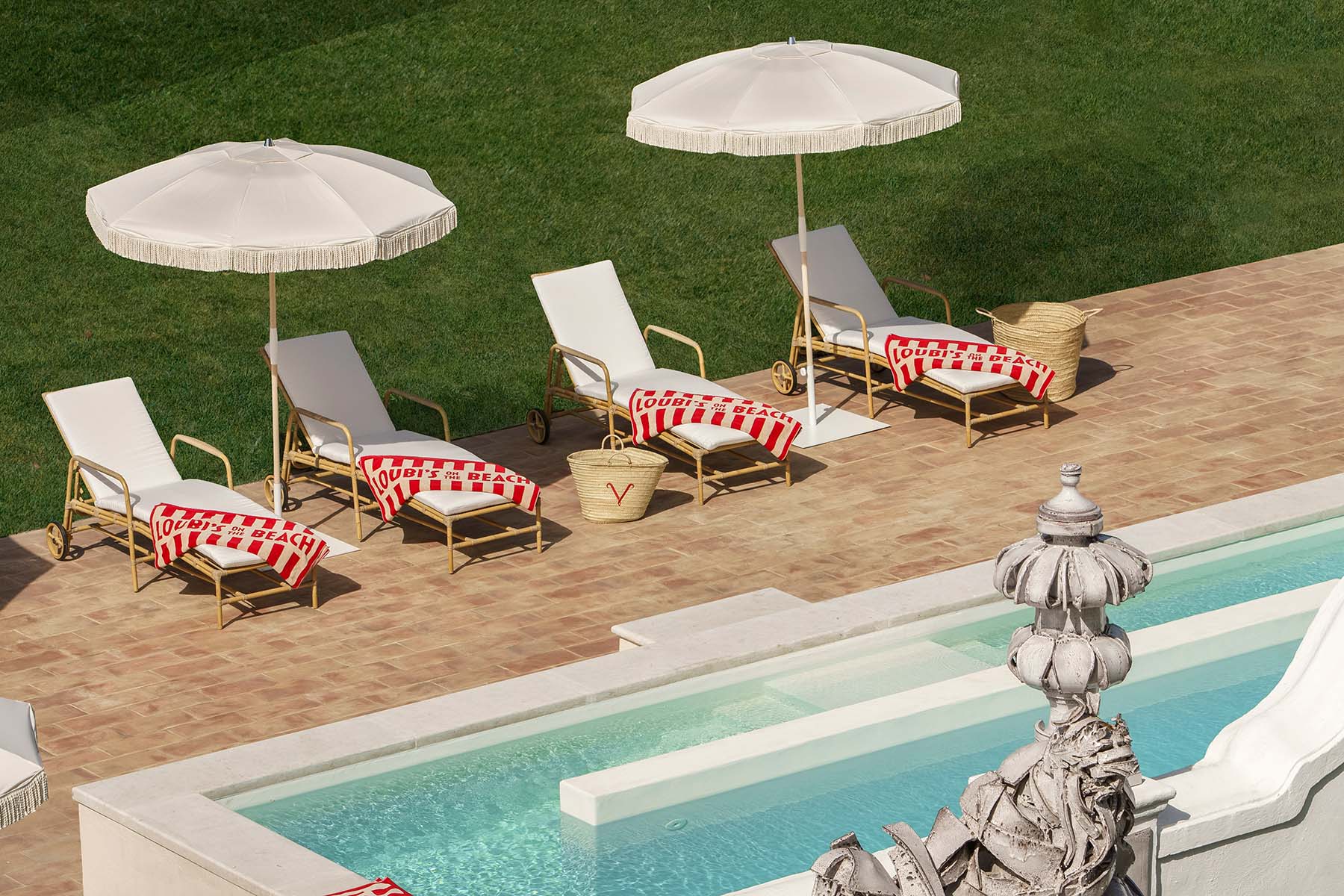Portugal’s once hush-hush beach town Melides is now a European haven for chic hotels, architecture and design enthusiasts, global artists and more. An easy hour and a half drive southeast of Lisbon, nestled between the hills of Serra de Grândola and the sandy coastline of the Atlantic Ocean is Melides, Portugal. At first glance, the small fishing village unfolds as a panorama of whitewashed buildings. The low-rise cafés, boutiques and homes exude a laid-back elegance with their terracotta-tiled roofs, cerulean blue-paint framed windows and borders, and the pink blooms of the bougainvillea vines that climb their branco exteriors.

History is etched into the architecture here, and dates as far back as 711 CE when the Moors invaded Portugal and remained until 1294. Evidence of the North African influence endures in many of the old and new buildings’ curved archways, intricate ceramic tiles and tall, slender chimneys. Set against the backdrop of the azure ocean, the town’s old-world sensibility looks as quaint and postcard-worthy as we’d hoped.
As we make our way through the streets, the ringing bells of Melide’s 17th-century cathedral Igreja de São Pedro welcome us. It’s 12 o’clock and a small group of people are enjoying lunch on a restaurant patio. The smell of freshly grilled fish is carried on the ocean breeze through the car’s windows, tempting us to stop for a bite to eat. Google Maps assures us, however, that French shoe designer Christian Louboutin’s new hotel is nearby, so we carry on, turning left down a narrow cobblestone road. At the bottom is a building that resembles an ancient convent but is, as the small plaque in tile assures us, our destination, the Hotel Vermelho. We ring the doorbell at the tall studded wooden door and a gentle push of the door leads into a bright courtyard terrace decorated with watery blue azulejos — Portugal’s famed glazed ceramic tiles.

Given how gracefully the building blends into the sleepy village, we are surprised to discover the hotel, which opened on April 1, 2023, is not a restoration but a new build. Louboutin has lived in Melides since 2010 and has an extensive 350-acre compound near the lagoon, comprising a series of homes, ateliers, and even a tower, La Folie, inspired by India’s Jantar Mantar, where he meditates and hosts parties. Louboutin originally planned to launch a restaurant where he could host visiting friends.
Instead, the mayor made him a counteroffer: Why not open a hotel? The designer drew on his wide network of artists, aristocrats and fellow global travellers to fulfill his boutique-style accommodations. His long list of collaborators included architect Madalena Caiado, interior and textile designer Carolina Irving, who created the rich fabrics, aristocrat Patricia Medina Abascal, who consulted on the Spanish design elements, Italian sculptor Giuseppe Ducrot, who made the astonishing ceramic appliqués framing the doors and windows, and Greek artist Konstantin Kakanias, who painted the dreamy, undersea murals for one of the hotel’s 13 suites.

The exuberant selection of fabrics, art, and craftsmanship in the tile, metal and woodwork spark joy, lending the hotel’s public spaces a more-is-more aesthetic. “Vermelho,” which means red in Portuguese and is the colour of the soles of the designer’s famous shoes, is the leitmotif and appears throughout the property — from the red flowers in the garden to the 7,000 hand-painted floor tiles crafted by local artisans. Once settled into our room, we head back outside to explore.
Strolling into the heart of the village, past some of the 18th- and 19th-century houses and the dozing cats takes us less than 20 minutes. Melides (pronounced“Melidesh”) is better known for its rich cultural heritage, particularly traditional food and wine rather than monuments. Some points of interest include the São Pedro church with its worn stone floors and weathered wooden pews and the Fonte dos Olhos catchment, built in the late 1960s to supply water to the parish and which today serves the local rice fields.
Unlike the nearby towns of Comporta and Carvalhal, Melides is the epitome of low-key luxury. Typical activities include birdwatching at the lagoon and biking. to one of the many beaches — Galé and Aberta Nova are standouts — where you can walk for miles in blissful solitude, surf the waves and, even, horseback ride. For shopping, there is Vida Dura’s covetable tableware, ceramics and textiles — all crafted by local artisans.

For dining, grilled fish and seafood are plentiful along with delicious wines from the Península de Setùbal region. Flor de Sal by Melides is ideal for tapas and small plates. Tia Rosa serves traditional regional dishes, such as duck rice and eel, and O Fadista, located near the church, has a striking interior with regional paintings. The new chic addition is Vermelho’s restaurant Xtian (a play on “Christian”) decorated with a collection of vintage Bollywood posters. The menu is reflective of traditional Portuguese dishes but with an international twist. Many of the ingredients, such as IV Pilar, and the house olive oil, are sourced from small family operations.
Now, having reached peak-comporta, the sleepy hideaway is stirring. Discerning travellers are warming up to chilled-out Melides, which is attracting a bevy of international elites such as French designer and architect Phillippe Starck, Brazilian model Gisele Bündchen, and German painter Anselm Kiefer. Many have been lured by Melides Art, a residential community, tourist destination and artists retreat that was conceived in 2019 by Portuguese real estate developer Miguel Carvalho. Scattered across the communal park’s expansive 270-hectare forest are an array of luxurious villas and art studios — available to travellers and artists alike for both long and short-term lease. Wandering further through the pine and eucalyptus trees reveals a handful of large-scale sculptures, including Marnie Eber’s “The Autumn Bear,” Robert Melee’s “Colorful Monsters,” and Olaf Breuning’s anthropomorphic marble figures titled “The Humans.” Multiple art exhibitions and cultural events will also be held annually at the park’s newly established Art Pavilion and Museum of Horizon.

Additionally, actor George Clooney is making a mark in Melides, putting some of that Casamigos tequila money (Clooney and his partners sold the brand for $1 billion) towards a piece of the Herdade da Costa Terra Golf & Ocean Club. Louboutin too, is breaking ground on a second, 8-room hotel near the lagoon complete with a pool, spa and rooftop bar.
Fortunately, transformations have been kept to a minimum as developers strive to harmoniously blend into the surrounding environment. In honour of his love of Melides, Louboutin initiated a non-profit dedicated to the conservation of local biodiversity including the lagoon. While it would be exhilarating to bump into the shoe designer or Clooney on a morning walk, wouldn’t it be lovely if Melides, the sleepy beauty, slept in for just a little bit longer?
By Rita Silvan — *Insight: The Art Of Living Magazine – The Metamorphosis Issue.



